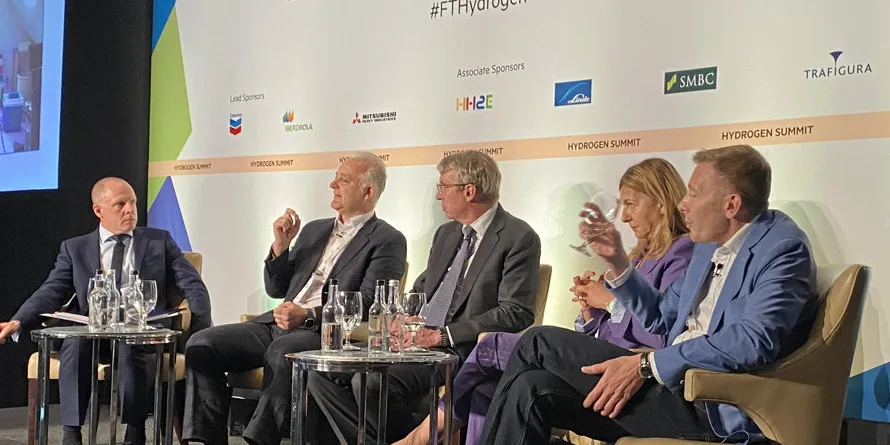Hydrogen-derived sponge iron could become a globally traded commodity: ETC chair
Moving sponge iron production to locations awash with renewables and green H2 makes sense for decarbonised steel, says chair of Energy Transitions Commission

Direct reduced iron (DRI), also known as sponge iron, made with hydrogen could be produced adjacent to electrolysers instead of steel mills in future – and become a global traded commodity, chair of climate think-tank Energy Transitions Commission, Lord Adair Turner, has said.
DRI, a key component of steelmaking, is made today by “reducing” iron ore using a gas made from coal or fossil gas, as part of the on-site steel production process. Making DRI with green hydrogen instead of fossil fuels could help slash the greenhouse gas emissions from iron and steel, which currently account for 7.2% of the global total.
One solution is to make hydrogen-derived DRI close to green H2 production sites and export it to steel mills in place of hydrogen.
He added: “There’s a sense in [steel production] being close to the end [users], automotive and construction companies, but we may see a break-up [of] the existing value chain, where major steel companies in Europe or the US or elsewhere are buying their sponge iron from hydrogen DRI plants placed next to iron ore mines in places in the world that are also good for producing green hydrogen.”
“We may see a trade within the iron and steel system in future which is a trade in sponge iron rather than a trade in [iron ore] fines,” he added.
One candidate for relocated DRI plants could be the Pilbara region of Australia, which in addition to having an abundance of iron ore is well placed to become a green hydrogen hub over the coming years powered by its vast wind and solar resources.
It could seem counter-intuitive to move DRI production further away from end users: local production and supply is a founding tenet of the energy transition. Moreover, using bunker fuel to transport DRI will only push up steel’s carbon emissions – and costs.
“Relocating industry makes sense where the energy cost reduction exceeds the additional shipping cost,” it said.
In this case, the economics and carbon savings of will depend on the availability of ammonia-powered ships and a plentiful supply of green ammonia to decarbonise the shipping of DRI from hydrogen hubs to steel mill locations. As ammonia is a derivative of hydrogen, green H2 production facilities supplying DRI production could also capitalise on this potential market and make ammonia for shipping.
These kinds of innovative solutions will characterise a future energy system that will be unrecognisable from today’s, Elizabeth Press, director of planning and programme support at IRENA told the FT summit.
“You might be trading green steel or some other commodity that might be produced somewhere else where you have a lot of hydrogen,” she said. “We need to stop looking from where we are today and how it’s going to go the next ten to 15 years. We need to start in 2050 and walk back from there. This is part of thought process that we haven’t mastered yet, because we are still imagining a fuel replacement. This is not a fuel replacement; this is a new system. It’s going to work differently.”
(Copyright)